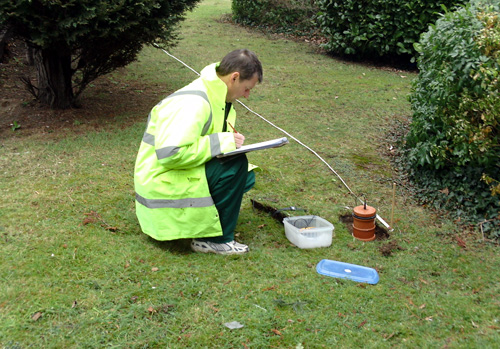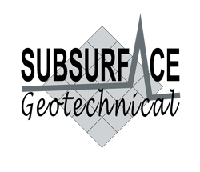
Passive measurement of ground potential using the SP method

Self Potential (SP) geophysical surveys measure the potential difference between any two points on the ground produced by the small, naturally produced currents that occur beneath the Earth's surface. The SP method is passive, non-intrusive and does not require the application of an electric current. Small potentials of the order of a few millivolts are produced by two electrolytic solutions of differing concentrations that are in direct contact, and by the flow of groundwater through porous materials (streaming potential). Larger ground potentials are produced by conductive mineralised ore bodies partially immersed below the water table.

Passive measurement of ground potential using the SP method
Standard SP surveys utilise non-polarising, porous pot electrodes, which have been specially adapted to minimise contact voltages. Readings are typically taken with one electrode fixed at a base station and a second, mobile 'field' electrode that is moved around the survey area. Reading stations are spaced at regular intervals along linear profiles, closed loops or grids depending upon the desired application.
The self potential method is traditionally used as a mineral exploration tool and for downhole logging in the oil industry. More recently it has been adapted for hydrogeological and water engineering applications, by the use of more sensitive equipment and the careful application of data correction processes.
The SP method also detects the presence of sporadic, man-made electrical currents in the ground, known as stray currents. Faults in high voltage electrical plant such as generators, industrial machinery and sub-stations can produce stray currents. The resultant changes to the natural electrical field are dynamic and random in nature. They can cause localised enhanced corrosion of buried steel structures and in rare circumstances, create an ignition risk to buried fuel tanks and fuel pipelines. Stray currents are identified by customised SP equipment that detects changes to the electric field vector in the ground.
Finding leaks in canal embankments
Identifying seepage in dams and reservoirs
Locating leachate leaks at landfill margins
Assessing the effectiveness of water-engineering remedial measures
Defining zones and plumes of contaminants
Mineral exploration of massive sulphide ore bodies
Stray current testing
Phone us at: +44-1905-619531 or e-mail us at: [email protected]